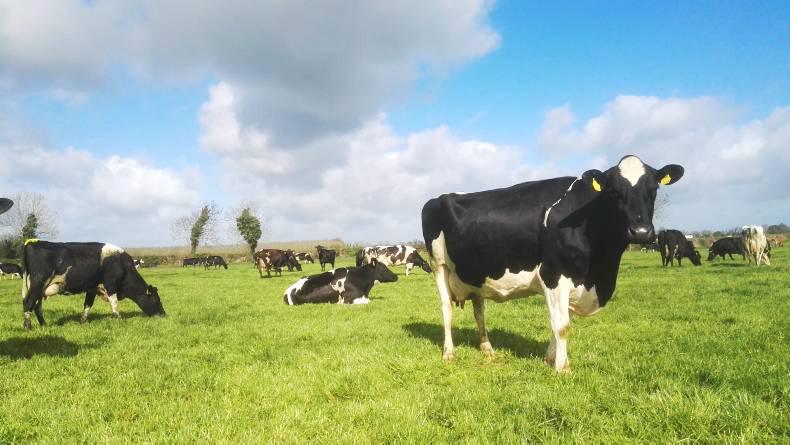Grazed grass has been proven with research and independent studies to be the cheapest feed available for milking cows, and should therefore be the primary element in a cow’s diet – especially given current financial pressure on dairy farm margins.
On many farms, concentrates account for two thirds of direct milk production costs, yet at the same time grass is often under-utilised.
In many cases grazing management is not good enough, with cows grazing heavy covers, not cleaning paddocks and ultimately reducing grass intake for the herd.
For Dairylink farms the primary focus for all the project farmers is to improve grazing management in an attempt to directly control purchased feed cost on each of the farms. Increasing grass growth through better soil fertility, producing higher-quality grass with improved grazing management, and allowing cows to fully utilise grass has enabled project farmers to lower feed costs.
Based on grass samples from project farms July grass has the potential to produce up to 20 litres of milk per cow per day with good grazing conditions, quality swards and the availability of silage after-grass. This offers many farms the potential to save on purchased feed, with many farmers still feeding 4kg to 5kg per cow with a herd average production of 22 litres.
Forward planning cashflow
Budgeting cashflow projections forward for 12 months is not a new concept for dairy farmers. However, it is still surprising just how many do not use any form of cash monitoring on their farms.
The farm current account will give an indication as to where the farm is in relation to cash surplus or deficit at a particular point in time.
However useful this information is, it is historic and it cannot be changed. Dairy farmers need more: they need to plan ahead to answer some key questions such as:
1. Will your business produce a cash surplus or deficit next month?
2. What about three months from now?
3. Can changes be made to help the cash shortage on your farm?
Current pressure on dairy farm incomes has forced many producers to look at their cash situation and attempt to predict the impact on their business for the next six months.
Keeping the budget simple and realistic is critical and will allow accurate and meaningful projections to be made, which will help businesses to be managed in order to avoid a major cash shortage.
Nigel Corbett, Banbridge, Co Down
Twelve months ago, I was feeding 5.5kg concentrate per cow and daily herd average milk production was 24.2 litres. Last week, our average concentrate input was 2.5kg/cow, with daily output at 22 litres per cow. This means herd output is down some 230 litres per day. However, farm margin after purchased feed has improved slightly, if calculated using the same milk and concentrate price, from £3.25/cow 12 months ago to £3.46/cow currently.
Effectively, we have replaced purchased feed with grazed grass from our farm. Yes, milk volume is lower but purchased feed has been reduced.
Performance
When assessing annual performance figures, we have dramatically improved technical efficiency within the herd.
In a nutshell, from what I can gather from Conail, our farm output has remained unchanged and purchased feed has been reduced by 55t for the herd.
It effectively means total milk produced from grass and forage increased from 1,300 litres to currently just over 3,000 litres per cow (comparison between 14/15 and 15/16 benchmarked data).






 This is a subscriber-only article
This is a subscriber-only article





SHARING OPTIONS: